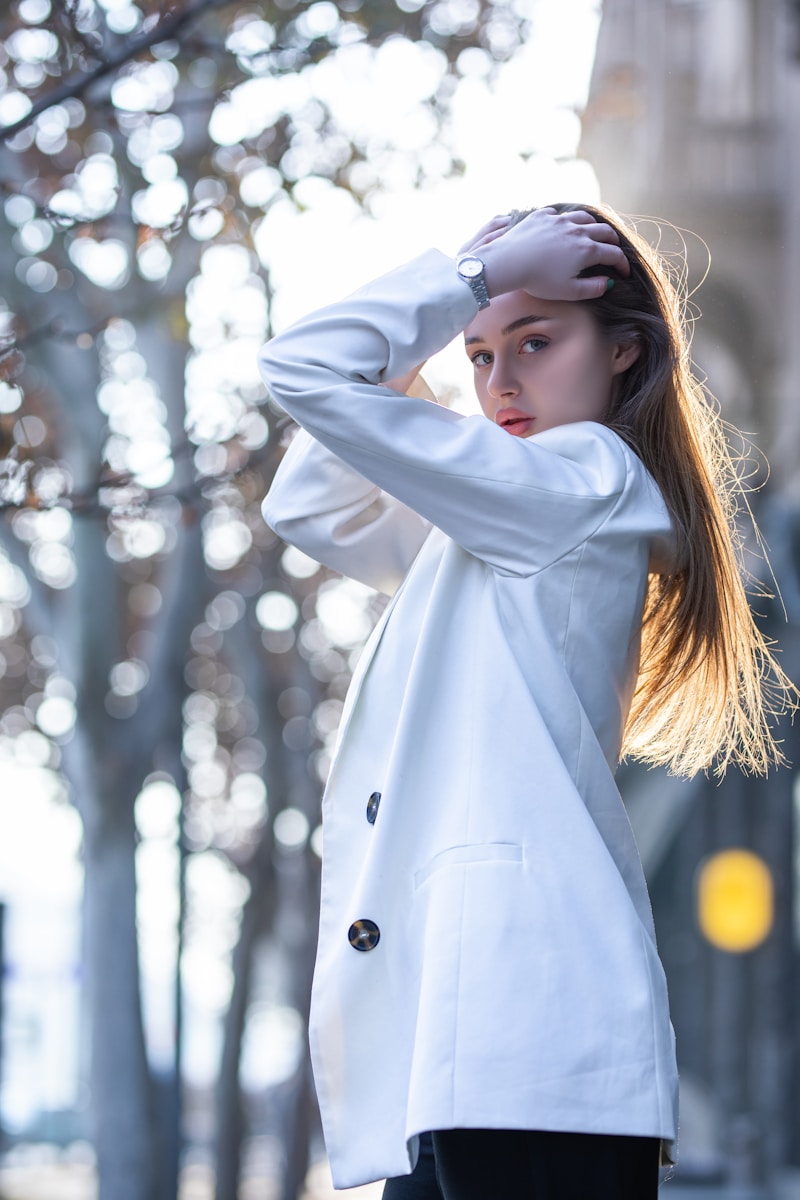Fashion has always been about more than just clothes—it is a form of language, a system of symbols that communicate mood, identity, and artistry. Within that language, texture plays a role as essential as color or silhouette. We often talk about the shade of a dress or the cut of a jacket, but it is the interplay of textures that gives an outfit its emotional charge. Smooth against rough, soft against sharp, matte against glossy—these juxtapositions create a narrative of contrasts that mirrors life itself. Few pairings embody this better than the daring combination of leather and lace. At first glance, these materials seem like opposites: one is rugged, rebellious, and tough, while the other is delicate, romantic, and refined. Yet when brought together, they form a dynamic harmony that surprises and seduces.
This essay explores the art of unexpected texture combinations, centering on the iconic dialogue between leather and lace. Beyond fashion runways, this pairing reveals how contrast can create balance, how opposites can amplify one another, and how clothing becomes a medium for expressing the complexities of modern identity.
The Psychology of Texture
Before diving into specifics, it’s worth considering why texture matters so much. Our perception of clothing is not only visual but also tactile—we imagine how it feels, even from afar. Texture evokes emotion. A chunky knit sweater invites comfort, while a glossy patent boot radiates confidence. Mixing textures creates a push and pull of sensations, layering emotions within a single look.
Fashion psychologists often note that texture combinations trigger subconscious associations. Leather suggests power and durability; lace suggests intimacy and delicacy. When styled together, they blur those associations into something more nuanced—strength made tender, softness given edge. This is why unexpected combinations often feel so memorable: they speak to the dualities we carry within ourselves.
Leather: The Language of Rebellion
Leather has a cultural legacy like no other fabric. From biker jackets in the 1950s to punk trousers in the 1970s, leather has symbolized rebellion, resistance, and independence. Even in its most polished forms—tailored leather blazers, sleek skirts—it carries a whisper of toughness. Wearing leather communicates resilience and authority, a readiness to step into the world unafraid.
Yet leather is not monolithic. Beyond the classic black jacket, there is suede leather, which softens the edge into something earthy and bohemian. Metallic finishes lend futuristic boldness, while dyed colors bring playful twists. This diversity allows leather to be both armor and art, both classic and experimental.
Lace: The Language of Romance
If leather is the rebel, lace is the poet. Its origins trace back to 16th-century Europe, where lace signified wealth and refinement. Over centuries, it became synonymous with femininity and intimacy—used in bridal gowns, lingerie, and evening wear. Lace, with its intricate patterns and semi-transparency, creates a sense of vulnerability and romance.
But modern lace has also been reimagined. Designers use oversized floral motifs, geometric cuts, or layered applications to make lace less dainty and more architectural. Like leather, it has proven to be a material of duality: both classic and avant-garde, depending on how it is styled.
Collision and Harmony: Leather Meets Lace
When leather and lace meet, something electric happens. The toughness of leather makes lace less saccharine; the delicacy of lace prevents leather from looking overly severe. Together, they strike a balance that feels alive with contradiction.
Think of a lace blouse tucked into a black leather skirt. The blouse softens the look, while the skirt grounds it with edge. Or consider a slip dress trimmed in lace beneath a cropped leather jacket—the jacket’s weight transforms a fragile garment into something street-ready. This isn’t just styling; it’s storytelling. The wearer communicates that they are both strong and tender, bold and romantic, unwilling to be defined by a single note.
Beyond Leather and Lace: Other Surprising Pairings
While leather and lace take center stage, they are part of a larger fashion philosophy that thrives on mixing the unexpected. Designers often play with combinations that feel “wrong” at first glance but create sparks when executed well.
Silk and Denim: Luxurious smoothness meets rugged utility. Pairing a silk camisole with distressed jeans creates casual elegance.
Velvet and Cotton: Plush velvet blazers layered over crisp cotton shirts bring old-world richness into everyday life.
Wool and Satin: A chunky wool sweater thrown over a satin skirt marries coziness with elegance, ideal for transitional seasons.
Sequins and Knitwear: The sparkle of sequins tempered by knit cardigans creates playful contrasts between party and comfort.
All of these combinations underscore the same principle: contrast intensifies character. By pairing unlikely textures, you heighten the impact of each material.
Cultural Symbolism in Texture Mixing
Texture isn’t just about aesthetics—it’s cultural. Leather and lace, for example, reflect broader societal ideas. In Victorian England, lace was a marker of restrained femininity, while leather was associated with masculine labor and utility. By fusing them today, we symbolically challenge those historical divisions. The wearer is not confined to “feminine” or “masculine” roles but embraces complexity.
This is why fashion critics often call leather-and-lace outfits subversive. They don’t merely look interesting; they carry deeper meaning about gender, identity, and social norms. Each texture is a symbol, and when combined, they rewrite cultural scripts.
Texture in Everyday Styling
For everyday wearers, texture mixing might sound intimidating, but it needn’t be. The key is balance. Too many clashing textures can overwhelm, but one or two carefully chosen contrasts elevate an outfit instantly.
For example:
A lace camisole layered under a leather moto jacket is a simple yet striking combination for a night out.
A suede leather belt cinching a flowing lace dress creates structure without overshadowing delicacy.
Accessories are a safe entry point: lace-trimmed socks peeking out from leather boots, or a leather clutch carried with a lace-trimmed blouse.
What matters most is intentionality. When textures are chosen thoughtfully, the outfit communicates personality without chaos.
Fashion Runways and Red Carpets
Runways often push texture mixing to the extreme. Alexander McQueen famously paired leather harnesses with ethereal lace gowns, turning contradiction into high drama. Versace frequently juxtaposes sleek patent leather with ornate lace to embody glamour with attitude. These designs might not always translate directly to everyday wear, but they influence how we perceive textures in more accessible fashion.
Celebrities, too, harness the power of leather-and-lace contrasts on red carpets. Think of a lace gown topped with a studded leather belt, or leather corsets layered into lace dresses. These looks garner attention because they embody paradox—they are both delicate and defiant.
Emotional Resonance
Why do these combinations resonate so deeply? Because they mirror human experience. We are rarely just one thing—never entirely soft or entirely strong. Fashion that combines textures like leather and lace acknowledges that duality. It tells us it is possible to be powerful without losing tenderness, romantic without losing edge.
That emotional depth is what transforms clothing from mere utility into art. Texture becomes a metaphor: for contradiction, for balance, for the layered complexity of identity.



